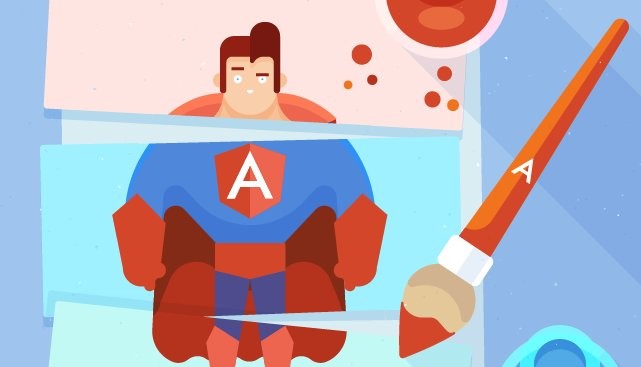Build Ultra-Modern Web Apps with Angular Material

At the Google I/O Conference back in 2014, Google announced Material Design, their new design language. They have since converted much of their popular applications to adhere to this new spec in an effort to provide a consistent experience. Now they are trying to convince you to follow along as well.
What is Material Design?
After a visit to the official Material Design spec, you will immediately get a feeling of ultra-modern minimalism. Basic shapes and flat colors are the theme here. Going through the documentation is quite an experience. I recommend taking a look for yourself, but I will summarize it here.
Goal
The purpose is to create a visual language that synthesizes classic principles of good design with the innovation and possibility of technology and science. Also to develop a single underlying system that allows for a unified experience across various platforms and device sizes.
Principles
Material Design is founded on three principles.
MATERIAL IS THE METAPHOR
Inspired by the study of paper and ink, the material lives in 3D space and is grounded in tactile reality. It gives the illusion of space by using realistic shadows. The paper material must abide by the laws of physics (i.e. two pieces of paper may not travel through each other), but may supercede the physical world (i.e. a paper may grow or shrink).
BOLD, GRAPHIC, INTENTIONAL
Deliberate color choices, edge-to-edge imagery, large-scale typography, and intentional white space create a bold and graphic interface that immerse the user in the experience. The Floating Action Button, or FAB, is a prime example of this principle. Have you noticed that little circle with the ‘plus’ symbol floating around in your Google Inbox app? Material Design makes it very apparent that this is an important button.
MOTION PROVIDES MEANING
Motion is meaningful and appropriate, serving to focus attention and maintain continuity. Feedback is subtle yet clear. Transitions are efficient yet coherent. The main point here is to animate only when it has a purpose and not to overdo it.
How does AngularJS fit into Material Design?
AngularJS, Google’s “Superheroic JavaScript MVW Framework”, addresses many of the challenges encountered in developing single-page applications (SPA). It provides the framework needed for creating modern web applications that connect to APIs and never need the page to be refreshed.
AngularJS: A New Approach
Angular is what HTML would have been, had it been designed for applications. HTML is a great declarative language for static documents, but creating dynamic applications not so much.
Creating dynamic applications with HTML has always been an exercise in tricking the browser into doing things it wasn’t meant to do. There are a couple of approaches to doing this.
Library - a collection of functions. (jQuery)
Framework - code dynamically fills in static elements when needed. (Durandal, Ember)
Angular takes a different approach to solve this problem. Instead of struggling with the HTML it is given, it creates new HTML constructs. Angular teaches the browser new HTML syntax through a construct called ‘directives’. Angular comes with a set of these directives built-in, but also allows you to create custom directives, so it allows you to write your own HTML elements.
Wouldn’t it be neat if Google created a set of directives based on Material Design principles?
Introducing Angular Material
Google is actively developing Angular Material, an implementation of Material Design in AngularJS. Angular Material provides a set of reusable UI components based on the Material Design system. Angular Material is composed of several pieces. It has a CSS library for typography and other elements, it provides an interesting JavaScript approach for theming, and its responsive layout uses a flex grid. But the most appealing feature of Angular Material is its amazing collection of directives.
